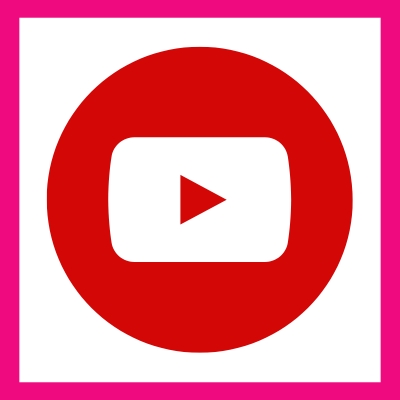Mr. Beast
Mr. Beast tried growing on Youtube for years, making hundreds of videos before anyone watched. There were so many times he felt like giving up.
But he trusted it would work out. He never lost faith, continued learning and kept going.
Now he’s the biggest creator on the planet.
He opened 150 “Beast Burger” locations in 24 hours.
His chocolate bars make over $100 Million dollars per year!
It costs much more than a super bowl ad to sponsor one of his videos.
And he turned down selling his brand for billions of dollars.
Mr. Beast has “made it”.
But where does he go from here?
Storytelling
So what the heck does this have to do with storytelling?
Well, that’s a short story. 9 lines to share the beginning, middle, and end of his journey.
Oh, and a tiny cliffhanger in case we want a sequel : )
I’ve helped a couple of people write memoirs in the past. I’m currently helping someone write a young adult fiction book. And I too am working on a personal development book.
These are three different genres, but they have one thing in common.
The importance of telling a great story.
So naturally I’ve been talking a lot about “story”.
Sometimes it’s a bit easier to observe, like in the case of a novel, movie, or tv series.
Sometimes it’s a little more subtle, in the case of self help, blog writing, and music.
Sometimes it’s mandatory, other times less so.
But regardless of your medium, telling stories can help.
You could take photographs, start a channel unboxing cards, paint acrylic on shoes, or sell donuts, and yet, storytelling can help.
This is why storytelling is one of the most important, overlapping skills for all creators.
And if I were forced to pick one thing to study and practice forever, it would probably be “how to tell better stories.”
The Strangest Barrier To Storytelling
You have great stories. And honestly I think you know how to tell them.
But first, let’s just focus on the fact that you do have them!
One of the most common (arguably strangest) barriers to storytelling is that people feel like they don’t have “stories to tell”.
This is where I’ve really been able to help people write memoir style.
Sometimes you just need someone to talk through them with you.
Over the course of hours, weeks, or months, we can uncover many stories.
So that’s one thing you can do, is chat with someone else who can help you think of moments in your life you could retell.
But there’s also a way to do this yourself.
Brainstorm your stories on a mind-map. Simply sit with a pen and paper and start jotting down any moments you remember from your entire life.
Doodle, make connections, and jot notes, feelings and ideas.
In my experience, you will have a bunch of stories in no time.
Create New Stories
But what can you do if you truly don’t have what you would consider a good story?
I felt like this at different times in my life.
I would look at other authors, musicians, athletes, creators and public speakers and think “I wish I had stories to tell too.”
But then I realized two things.
First off I was looking at it all wrong.
I do have stories to tell. The difference was these people learned to package the stories they tell.
Or, in many cases, someone else packaged them for them and told them what to say.
And the second thing was that I could create stories.
Stories are replenishable.
If you feel like you’ve told most of your good stories, then you can do a couple things.
You can tell other people’s stories, like I did with Mr. Beast earlier.
And again, these can be short like a social post, or long like a 4 part documentary.
Another thing you could do is create new stories for yourself.
Go out, meet people, attend, or host events, collaborate, try new things, volunteer, take on new challenges.
But this time go into it with a lens for remembering stories.
When something seems like it could be interesting to an audience, jot it down.
You never know what will connect with people.
You could even plan these a little bit.
We don’t want the experiences to be too prescriptive, but you can get fairly specific.
In writing my new book I’ve been thinking a lot about wisdom.
The fact that both young kids and seniors are extremely wise.
When I was a kid I used to volunteer in a seniors residence and a daycare.
And I’ve been reflecting on those days while writing. So I think I might go back to those locations.
I can ask some kids what they want to be when they grow up?
And ask some seniors advice they would give their younger self?
I have absolutely no doubt in my mind that these experiences would lead to some pretty great stories.
I don’t know what they would be, but they’ll be something. And that’s the exciting part about life.
A Story Can Be Short & Simple
Don’t overthink the definition of a story. A story can be long, or short.
It simply needs to include a series of things happening.
And they can be really simple too. Like the 9 lines I shared at the beginning of this post.
Or what about these classics?
“Ring around the rosie. A pocket full of posies
Ashes! Ashes! We all fall down.”
“Jack be nimble Jack be quick Jack jump over the candlestick”
“Jack and Jill Went up the hill. To fetch a pail of water.
Jack fell down and broke his crown and Jill came tumbling after.”
How To Tell Better Stories
I hope by now you understand that stories can be short, sweet, but also really powerful in helping you share any message you want.
The best thing about storytelling to me is that it is yet another infinite game.
We can get better and better at storytelling forever.
So for today, let’s keep it simple, what are a few things you could do today to improve your storytelling?
I’ll keep these quick.
- Keep It Simple – A good story is easy to understand. It should be around the 5th grade level in terms of language. Don’t make it any longer than it needs to be. Remove the fluff, no extra stuff. And don’t rush the pace, or rate of revelation, just let the story breath.
- “No And Then” – There’s a funny moment in the movie “Dude Where’s My Car?” where the person working the drive through window keeps saying “and then” and they’re having to say back a bunch of times “there’s no and then”. It’s a great way to remember the main storytelling tip that the creators of South Park Matt Stone and Trey Parker say. Don’t create “and then” moments. Instead make your beats, or events lead to each other. Connect the moments. For example “this happened, so this happened, because this happened, so this happened”. As opposed to “this happened and then this happened and then this happened.”
- Hooks And Headlines – You need to grab attention. So, you should spend disproportionate time on the head line and hook. This is the catchy, thesis, value statement of the piece. It creates intrigue and without it no one will listen to your story anyways.
- Engage Emotions – Use power words that connect with your audience on an emotional level. This makes it more impactful, memorable and worthwhile.
- Show, Don’t Tell – Rather than explaining, use immersive words and phrases that tap into the senses of sight, sounds, smells, and tactile experiences to create a vivid picture in the audience’s mind.
- Relatable Characters – Develop the archetype of your character in a way that makes them understood, intriguing and connected to the audience. Give them depth by adding unique traits, desires, and conflicts.
- Use A Framework – Now these can be a bit abstract, maybe something we can look at in more detail later, so I’ll give a couple examples for now. You can go off the beaten track and get as creative as you want, but at first you should start with a framework for the story. There are many frameworks. You can look them up specific to telling stories for education, memoir, business, or fiction. The simplest is to think in terms of “a beginning, middle and end”. And one of the most popular is “the hero’s journey.
Hero’s Journey: A series of steps the character must take to achieve their goal. The main steps include: call to adventure; crossing the first threshold; leaving behind the known world, venturing into the unknown; tests, trials, and allies; a major enemy or obstacle; and finally, the return home, transformed and changed by their experiences.
Want To Apply For Coaching?
I go super deep and it takes a lot of energy, I only take on a few clients at a time. So it’s always a good idea to be on the waiting list.
Every so often I go to my list of applicants and do some initial clarity calls.
I charge a lot of money for a one-time clarity call, but for potential coaching clients, this call is FREE.
It’s not a 15 minute “chat”. More like 1-2 hours. And it is a deep, powerful, life changing coaching session.
The goal of this session is to identify your big dream, what’s getting in the way, and come up with a plan.
There is no big sales pitch about being a client at the end.
If you want to work together long term AND I feel it would be a positive experience for both of us then I will explain the next steps.
Either it will be a Hell Yes, Or A Hell No!
But no matter what it will be an incredible experience.
If you want to learn more about how and why I specifically coach people one to one, check out this article.
Ready To Apply For Coaching?
If you want to explore working together you can apply here.
Justin Nolan JKL Coaching Application Form
Not Ready For Coaching Yet?
I’ve worked with a number of coaches after years of learning from them.
I listened to their podcasts, read their newsletters and read their books.
Years later I had saved up enough money, or worked up the courage to learn from them directly.
One of the best ways I share everything I learn to help you on your journey is in the JKL Newsletter.
CONNECT WITH JUSTIN:
Instagram @Justkeeplearning.ca
YouTube – @justkeeplearningpodcast
X – @JustinNolan_JKL
TikTok – @justkeeplearning.ca
Pinterest – justkeeplearningca
Facebook – justkeeplearning
LinkedIn – justinnolan-justkeeplearning



